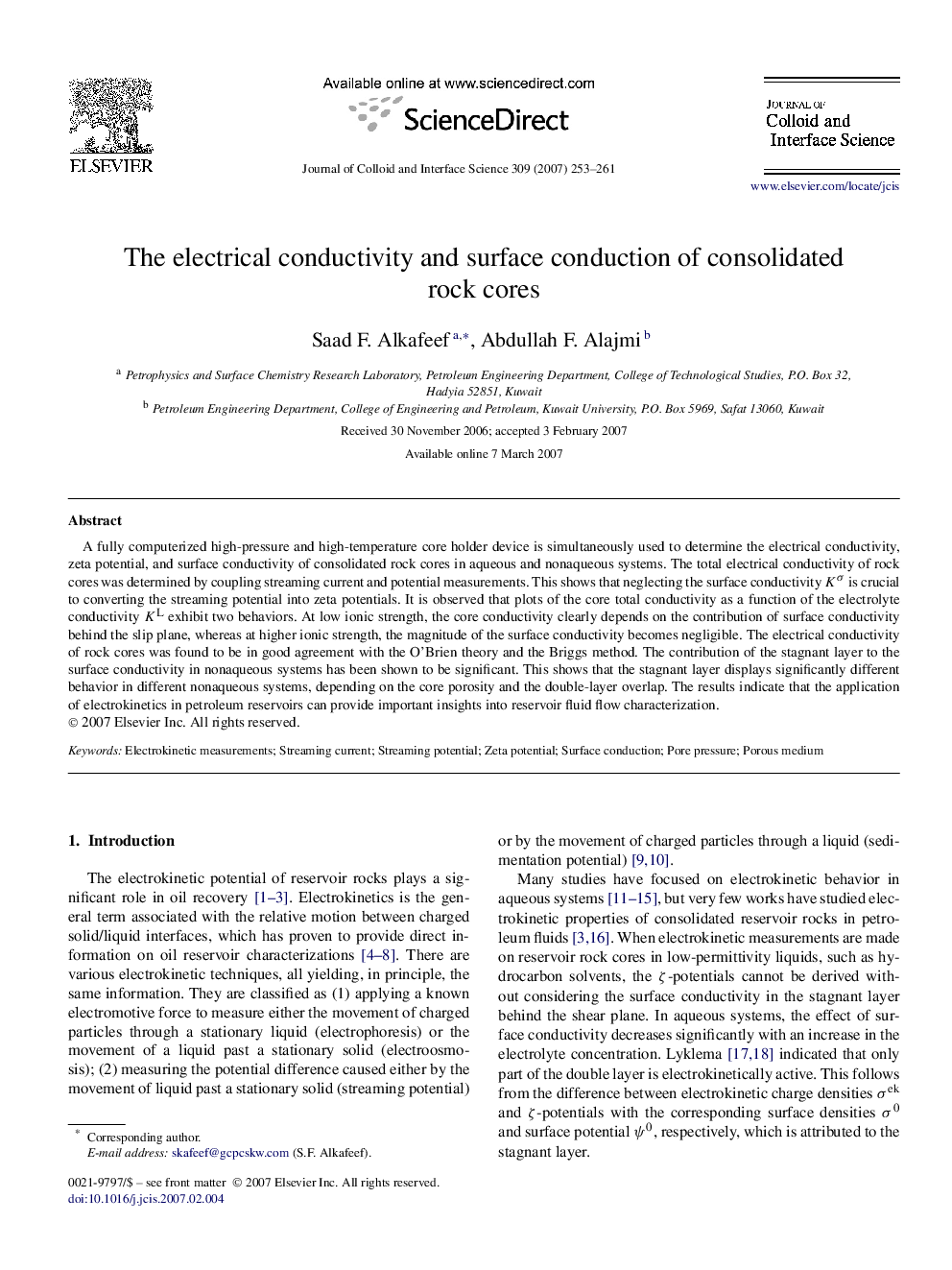| Article ID | Journal | Published Year | Pages | File Type |
|---|---|---|---|---|
| 612354 | Journal of Colloid and Interface Science | 2007 | 9 Pages |
A fully computerized high-pressure and high-temperature core holder device is simultaneously used to determine the electrical conductivity, zeta potential, and surface conductivity of consolidated rock cores in aqueous and nonaqueous systems. The total electrical conductivity of rock cores was determined by coupling streaming current and potential measurements. This shows that neglecting the surface conductivity KσKσ is crucial to converting the streaming potential into zeta potentials. It is observed that plots of the core total conductivity as a function of the electrolyte conductivity KLKL exhibit two behaviors. At low ionic strength, the core conductivity clearly depends on the contribution of surface conductivity behind the slip plane, whereas at higher ionic strength, the magnitude of the surface conductivity becomes negligible. The electrical conductivity of rock cores was found to be in good agreement with the O'Brien theory and the Briggs method. The contribution of the stagnant layer to the surface conductivity in nonaqueous systems has been shown to be significant. This shows that the stagnant layer displays significantly different behavior in different nonaqueous systems, depending on the core porosity and the double-layer overlap. The results indicate that the application of electrokinetics in petroleum reservoirs can provide important insights into reservoir fluid flow characterization.
Graphical abstractThe core conductivity exhibits two parallel behaviors: (a) is proportional to the surface conductivity and (b) is independent of surface conductivity as the magnitude of the surface conductivity becomes negligible.Figure optionsDownload full-size imageDownload as PowerPoint slide
